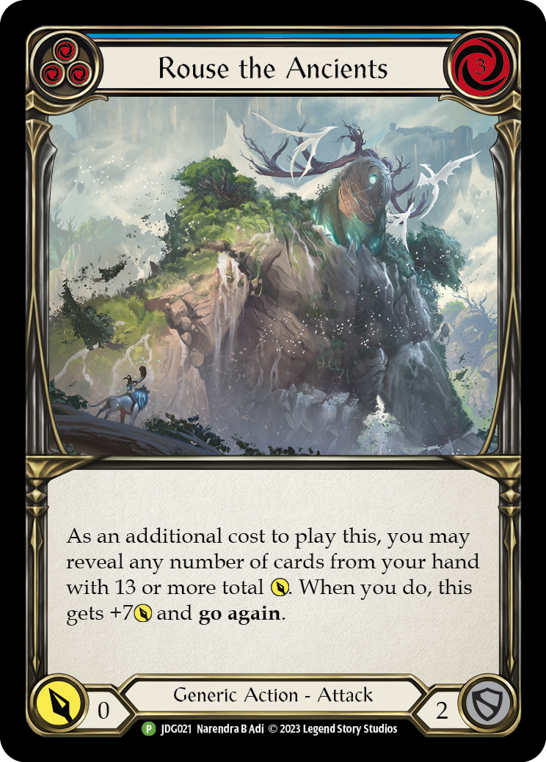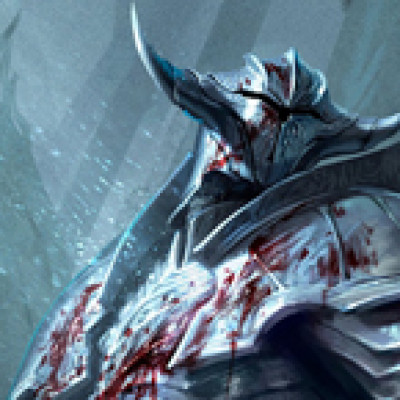With Tales of Aria’s recent launch, it’s as good a time as any to visit meta theorycrafting and the evaluation of new releases. As the total card pool of the game expands, so too will the number of decks that can perform at higher levels. It will take time for the new Tales of Aria meta to emerge and disrupt the champion incumbents (Bravo, Katsu, and Prism in CC), but how can we start to predict that developing meta and get out ahead of it? How do you sift through the hype and evaluate the power of new cards in this pseudo-vacuum?
While I will certainly discuss the financial side of things, it won’t be the main focus of this article.
(For great insights into the state of the market, I recommend taking the dive into Ada Korman’s state of the market series.)
Based on Monarch’s release- we know that, in the short term, prices will likely start at lofty highs and plummet rapidly for 80+% of the card pool. Of course, certain cards that manage to slip under the community’s collective radar for game-changing potential will appreciate.
Here are my best practices and tips to get the most out of a new TCG set and logically evaluate the merits of new cards both financially and in your own theorycrafting.
This article references an opinion and is for information purposes only. It is NOT investment or financial advice. Seek a duly licensed professional for financial and/or investment advice.
Be Patient
If you can, avoid purchasing singles on weeks one & two following the release of 1st edition. Unless you are specifically competing in events that require new cards, or are confident in your ability to speculate on the future value of a card and are willing to take that risk, wait to pick up the majority of your cards until Unlimited drops. Most prices will drop significantly in the first two weeks as more supply is introduced, and vendors and players list their inventory, nickel & dime-ing each other down to win the sale and your hard-earned money.
Of course, your money is your money. If you want the cards earlier than everyone else, buy them when you want. It can be hard to keep emotions in check when there is so much excitement around the release of a new set.
In fact, if you are fishing for financial and speculative gains as your primary motivation to get excited about a new set, I would argue most prospects for financial gain lie in cards from older sets that pair well with cards from the newest set. You will see speculation on this front from the earliest days of spoiler season- but it may slide under the radar amid rampant price speculation in the newest cards.
Most prospects for financial gain lie in cards from older sets that pair well with cards from the newest set.
If you are buying sealed product with the intention of selling some/all of those cards, you are likely better off selling sooner rather than later (or waiting a long time for 1e exclusive cards, like cold foils and alternate arts, to appreciate). You will make the highest potential return on your investment.
Of course, the financial perspective of this article is only one piece of the puzzle.
Do Your Own Research
Participate in the forums and conversations with the community on Discord and Facebook. Talk to your friends and play group- debate as needed, so long as it is done in a constructive way. Getting involved with the community, discussing the combos you suspect will be powerful, and learning what others are thinking is a great way to improve your own ability to evaluate the power of cards in your own theorycrafting and deckbuilding.
If your opinion on a card differs from the masses, you should be able to clearly articulate why you think card X is ‘good’, ‘bad’, or something in between. This is especially true if you’re planning on putting money on the line and speculating on individual cards based on your evaluation of the anticipated power of a card combo or a class’s rise to the highest ranks of the future meta. Master that elevator pitch for your ‘hot take’ on a card and bounce it off some impartial people in the community to validate it.
Mind the Gaps
Be aware of the gaps in your own knowledge!
Everyone has a plan until they get punched in the face. It’s easy to look at a card and perceive its power to be something it isn’t the majority of the time. When we look at new Flesh and Blood cards, a natural inclination can be to envision what that card looks like when backed by a 4+ card hand when in reality, that won’t always be the case. What does that card’s power level look like with only three cards in hand? How about two? What happens if I need to block with this card?

In Monarch spoiler season, I overestimated the impact of Rouse the Ancients. And while it has been a powerful card in my Bravo decks for both Blitz and Classic Constructed, it isn’t nearly on the power level I anticipated during the spoiler season. And that’s because your opponent hits back, and Rouse the Ancients is a card that requires more patience, setup, and resources to properly get value out of the go again. Games of Flesh and Blood are messy and you will have to make choices and pivot when you least expect it. Temper your expectations accordingly!
Confused? Check the Rules!
When trying to grasp a new card's function, or understand an interaction between new cards and old cards, turn to the comprehensive rules. Having a better understanding of the complex and underlying rules that govern every interaction in this game will help you learn how those interactions work well before LSS publishes the release notes for the set. I would argue that 90% of the release notes could be individually determined by simply reading and understanding the comprehensive rules (barring any errata or official changes to card text for clarity.)
Understand Opportunity Cost
By choosing to include one card in your deck, you are forgoing the opportunity to include another. Cards will compete for certain slots in decks, and slots devoted to certain functionality will be retired to make room for new. This is especially true in Blitz, where your playable deck is static between matches.
In old decks, making room for new cards will require careful evaluation of everything in the deck, then personal justification as to why you think the new cards are better than whatever was previously in that slot. You can validate that personal justification with thorough playtesting.
In hero decks from Tales of Aria, new cards and old cards alike will be competing with one another. You should be able to take your Fabdb.net decklist and walk your friends through why each card is in the deck and what it is trying to accomplish on a granular level. Start big and envision your strategy and goals; then get granular with your card choices.
Look To The Past to See The Future
Look through card galleries and cards from old sets to evaluate powerful synergies with cards from the past.
Personally, looking to the past is a way for me to look for new ways to incorporate some of my favorite cards in the game that I was no longer able to justify running at anything above an Armory event in Organized Play. Even then, when I am paying an entry fee and there are prizes up for grabs, I usually tend to do everything in my power to set myself up for success (while still having fun and enjoying the game I love). I have a hard time justifying playing cards that don’t do me any favors in boosting my deck’s consistency and pushing that final point of damage through.
A perfect example is Pursuit of Knowledge- one of my all-time favorite cards in Bravo, and one that can drastically swing the tempo of a game when paired with the infamous Pummel. I will absolutely be looking for ways to pair Pursuit of Knowledge with Oldhim in an Ice build that prioritizes disruption, control, and depriving my opponent of resources while taxing them on their turn. Extra intellect has always been a powerful effect. Having an extra card in hand to pair with Rampart of the Ram’s Head or Oldhim’s hero ability is sure to go a long way.
Conclusion
This is by no means an end-all-be-all list, but hopefully will provide some tips and tricks to help you with your own evaluation of cards and deckbuilding following a new set’s release- and to help protect your wallet while doing so!
What tips and tricks do you use to evaluate the power of new cards? Get involved in the conversation and let me know in the comments!




